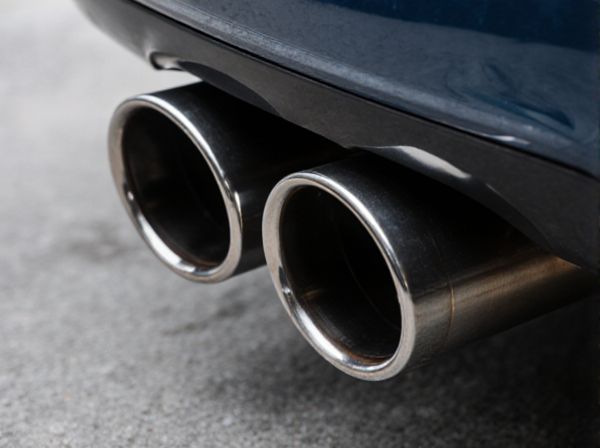
Photo illustration: H-Pipe vs Y-Pipe
Choosing between an H-pipe and a Y-pipe depends on your vehicle's exhaust flow and sound preferences. An H-pipe balances exhaust pulses, reducing drone and enhancing low-end torque, ideal for street driving. A Y-pipe merges two exhaust streams into one, promoting better high-RPM power but may increase noise and reduce low-end torque.
Table of Comparison
| Feature | H-Pipe | Y-Pipe |
|---|---|---|
| Design | Connects dual exhaust pipes with a center pipe in an "H" shape | Merges dual exhaust pipes into a single pipe in a "Y" shape |
| Performance | Improves exhaust scavenging, enhances mid-range torque and smoothness | Boosts top-end horsepower with a freer exhaust flow |
| Sound | Produces balanced, mellow exhaust tone | Creates louder, aggressive exhaust note |
| Installation | Requires more space and precise alignment | Generally simpler to install, less space needed |
| Best Use | Muscle cars and street performance vehicles aiming for balanced power | High-performance applications prioritizing maximum horsepower |
Introduction to Exhaust System Configurations
H-Pipe and Y-Pipe are common exhaust system configurations designed to balance exhaust flow and enhance engine performance. The H-Pipe connects both exhaust pipes with a horizontal pipe, promoting equal pressure and reduced backpressure, which improves low-end torque. In contrast, the Y-Pipe merges two exhaust pipes into one, optimizing exhaust scavenging for higher horsepower at mid to high RPMs, commonly favored in performance vehicles.
What is an H-Pipe?
An H-pipe is an exhaust system component designed to connect two separate exhaust pipes with a horizontal pipe, improving exhaust flow and boosting engine performance. It balances exhaust pulses between both sides of a dual exhaust system, reducing backpressure and enhancing power output and sound quality. Commonly used in V8 engines, the H-pipe helps achieve smoother engine operation and distinct, mild exhaust tones compared to Y-pipes.
What is a Y-Pipe?
A Y-pipe is an exhaust component designed to merge two separate exhaust streams into a single pipe, improving exhaust flow and engine efficiency. Unlike the H-pipe, which connects two parallel pipes, the Y-pipe creates a smooth, angled junction that reduces backpressure and enhances horsepower and torque. Commonly used in performance vehicles, Y-pipes optimize scavenging effects to boost overall engine performance.
Key Differences Between H-Pipe and Y-Pipe
H-Pipe and Y-Pipe differ primarily in design and exhaust flow efficiency; H-Pipes feature a straight cross-bar connecting dual exhaust pipes, promoting balanced backpressure and improved low-end torque, while Y-Pipes merge exhaust gases from dual headers into a single pipe, enhancing high-end power and compactness. The H-Pipe's symmetrical construction helps equalize exhaust pulses for smoother engine operation, whereas the Y-Pipe's design reduces weight and improves ground clearance. Selection between the two depends on desired engine performance characteristics and vehicle application, with H-Pipes favored for muscle cars and Y-Pipes common in modern V6 vehicles.
Performance Impact: H-Pipe vs Y-Pipe
H-Pipe headers provide balanced exhaust gas flow between cylinders, enhancing scavenging and improving low to mid-range torque, which results in better overall engine performance compared to Y-Pipe designs. Y-Pipes typically promote high-end horsepower by merging exhaust gases earlier, but can cause backpressure and reduce efficiency in lower RPM ranges. Performance gains from an H-Pipe include smoother exhaust pulses and more consistent power delivery, making it ideal for street and moderate performance applications.
Sound Characteristics Comparison
H-Pipe exhaust systems deliver a deeper, throaty tone by promoting exhaust scavenging and balanced pressure between headers. Y-Pipes produce a smoother, higher-pitched sound with less backpressure, favoring performance and fuel efficiency. The choice between H-Pipe and Y-Pipe significantly influences vehicle acoustic output and engine response.
Installation Considerations
H-pipe installation requires precise alignment for optimal performance, often demanding more workspace due to its straight, cross-sectional design. Y-pipe setups usually allow easier installation in tight spaces or custom configurations because of their angled, bifurcated structure. Both configurations impact exhaust flow and sound, but installation complexity varies based on vehicle compatibility and available clearance.
Vehicle Compatibility: H-Pipe vs Y-Pipe
H-pipes and Y-pipes differ in vehicle compatibility primarily due to their design and application; H-pipes suit older muscle cars and V8 engines by balancing exhaust pulses for improved low-end torque, while Y-pipes are common in modern V6 and V8 vehicles that require smoother exhaust merging for better high-RPM performance. H-pipes provide a straightforward crossover connection that enhances scavenging in parallel exhaust systems, making them preferable for street cars and classic vehicles. In contrast, Y-pipes merge two exhaust paths into one, optimizing space and emissions control for modern vehicles with tighter undercarriage packaging.
Pros and Cons of H-Pipe Systems
H-pipe systems effectively balance exhaust gases between cylinders, enhancing scavenging and improving low to mid-range torque, making them ideal for street performance. The symmetrical design reduces pressure drop and promotes equal flow, resulting in smoother engine operation and increased horsepower compared to traditional Y-pipes. However, H-pipes tend to add weight and complexity to the exhaust setup and may not deliver the high-end performance gains favored in race applications where Y-pipes provide better top-end power.
Pros and Cons of Y-Pipe Systems
Y-pipe exhaust systems offer improved exhaust gas flow by merging two exhaust streams into one, enhancing engine performance and reducing backpressure. They can increase horsepower and torque in multi-cylinder engines by optimizing scavenging effects but may cause increased noise levels compared to H-pipe designs. Y-pipes are generally lighter and simpler to install but might lack the balanced exhaust flow that H-pipes provide, which can affect overall engine smoothness.
 caratoz.com
caratoz.com